Back to blog
5 MIN READ
Product Analytics Examples - 5 Case Studies to Inspire You
PUBLISHED
8 February, 2025

Product Analytics Expert
Looking for real-world product analytics examples?
In this article, we'll explore product analytics case the impact of real-time data insights on user experience and engagement. By utilizing product analytics, app developers can gain valuable insights into user behavior, preferences, and pain points, all in real-time.
Helpful Summary
Overview: We explore five different examples of how product analytics can be used to improve the performance and success of a mobile app.
Why Listen to Us?: We’ve helped 37,000+ mobile product teams improve their user experience and increase engagement by providing accurate, real-time data insights.
Why It Matters: Insights into your product are crucial for optimizing mobile apps and improving UX.
Action Points: Find a great product analytics tool and take advantage of a wide range of features—from session replays to event analytics.
Further Research: Check out the UXCam blog for more case studies and tips on using product analytics.
5 Product analytics examples
Below we'll examine examples of how mobile app product managers at top companies use product analytics to deliver a satisfying user experience in their apps.
All of the examples below used UXCam, a product analytics solution for web and mobile apps.
You can see a quick demo of UXCam here:
Costa Cofee: Session analysis
Costa Coffee is a well-known coffee brand that was trying to launch a loyalty program through its mobile app a few years back. The idea was sound (Starbucks had success with a similar program), but there was a problem—30% of users were dropping out during registration.
Costa Coffee's global digital analytics manager turned to UXCam’s product analytics suite to pinpoint the issue. He tracked custom events for critical registration metrics and used funnels to visualize user signup journeys.
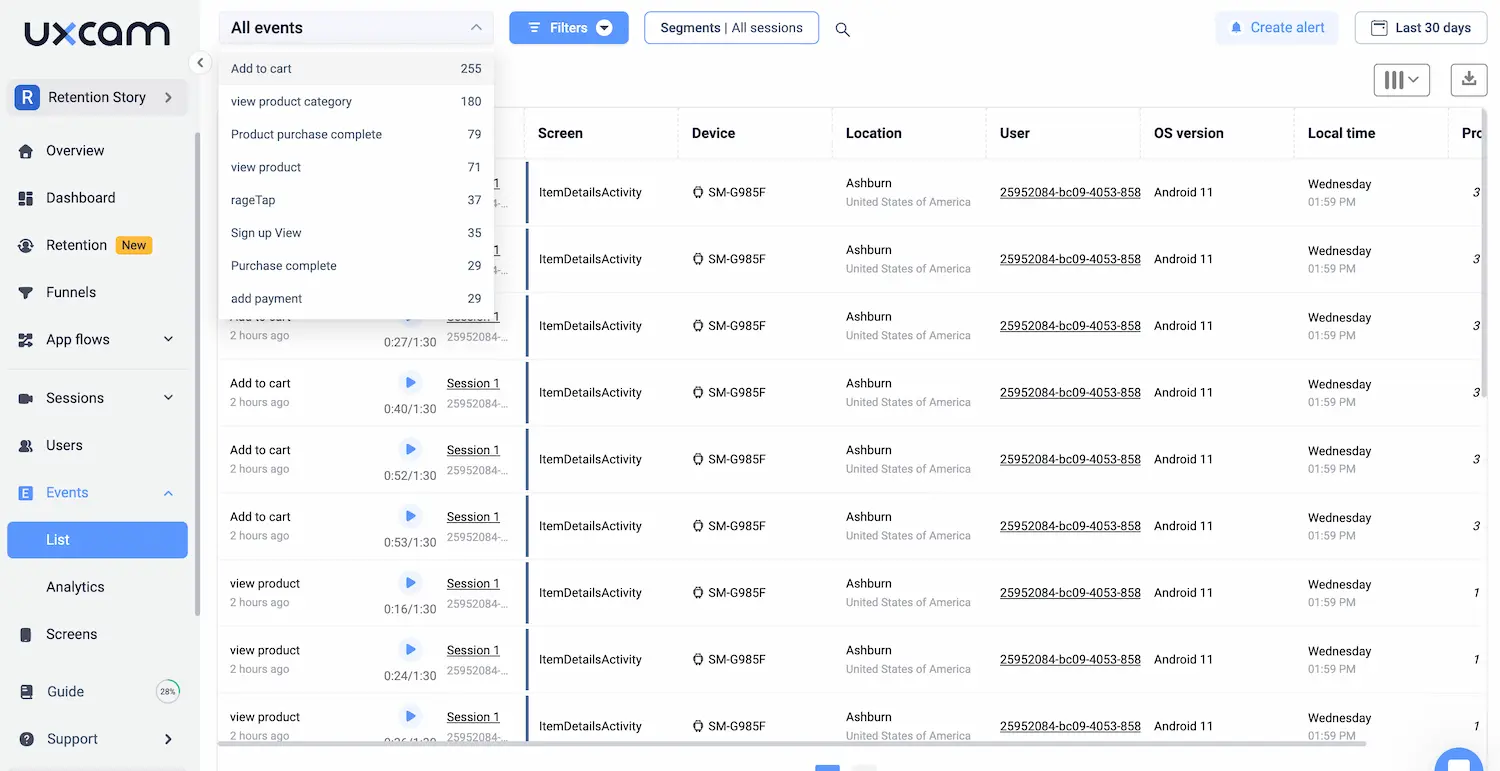
This analysis revealed the main bottleneck—15% of new users dropped off due to invalid passwords.

Daniel then set up additional events to identify reasons for invalid passwords and studied session recordings for insights. Based on these findings, the analytics team proposed design changes, leading to a 15% increase in app registrations.
JobNimbus: Dashboards
JobNimbus is an all-in-one CRM and project management software for contractors.
The web app was successful, but the team was struggling to gain a foothold with their mobile app—it was stuck at a 2.5-star rating on the App Store. Their target market wasn’t responding to the app’s overly technical workflows, and weren’t swapping it in for their pen and paper.
The team decided the best solution was a total app redesign that focused on user requirements.

UXCam’s product analytics gave the team a way to make sure that they were making progress on things that would actually move the needle with users. They built dashboards to track key metrics and ran targeted experiments based on UXCam’s data.
The result? The app’s rating improved to 4.3 stars and is not a top three retention reason.

Recora: Heatmaps
Recora is a virtual cardiac rehabilitation app that aims to improve the lives of heart disease patients—many of them in an older demographic.
There was a problem, though. Recora’s product team was constantly getting complaints forwarded from support about app glitches and malfunctions that they couldn’t find or replicate. At a loss, they turned to UXCam’s product analytics tool.

Specifically, they used:
Session Replays: To view impacted sessions in real-time.
Heatmaps: To quickly identify patterns and trends.
They eventually found that the vast majority of “issues” were really misunderstandings. For example, lots of users were pressing and holding a button that was meant to be tapped. This was leading users to accidentally trigger certain actions and think the app was malfunctioning.
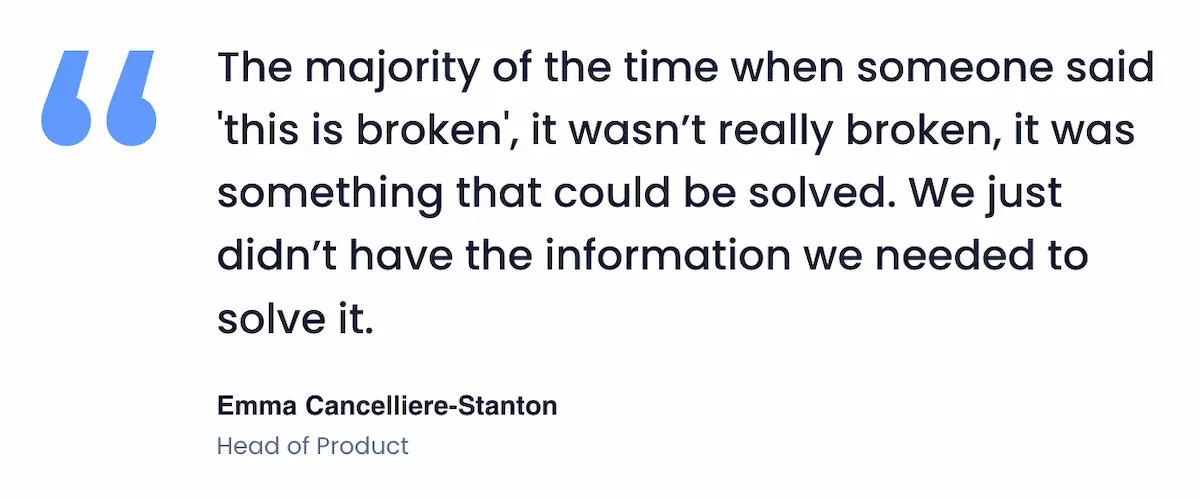
Fixing these issues led to a 142% decrease in support tickets.
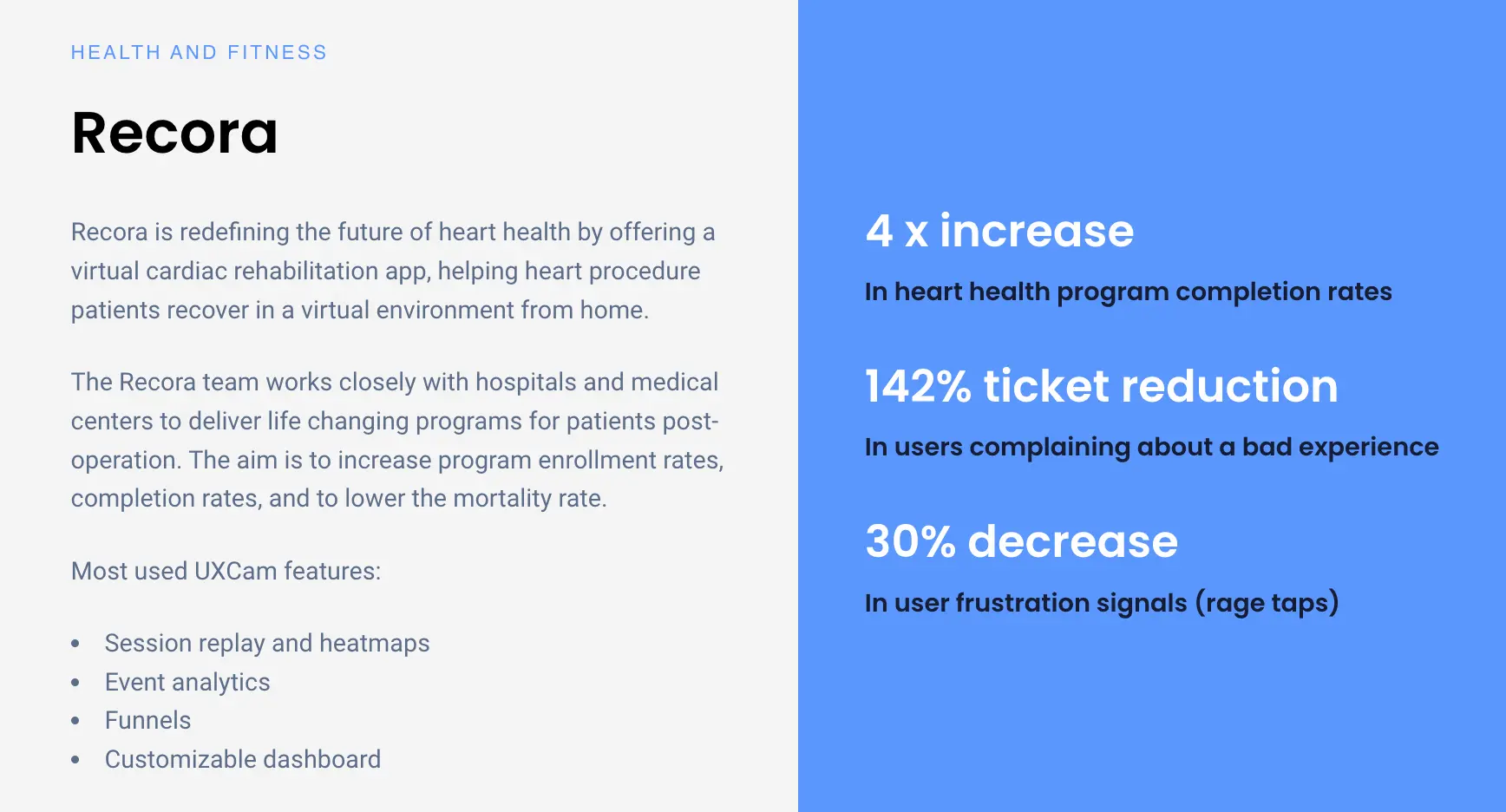
PlaceMakers: Product CRO
PlaceMakers, a construction material supplier in New Zealand, experienced rapid growth after launching its app in April 2020. The app attracted over 3,000 daily users and 100,000 monthly sessions.
The app's launch coincided with lockdowns due to the pandemic, impacting supply chains in the construction industry. PlaceMakers faced challenges in keeping stock levels updated on their app as materials sold out quickly, causing frustration for users at checkout.

To address this, they introduced a “Constrained Products” tag to indicate low-stock items. However, user response was poor, with sales dropping by 80%. The team used UXCam's session replays and heatmaps to identify messaging that was less intrusive.
This simple fix led to a 2X increase in sales.
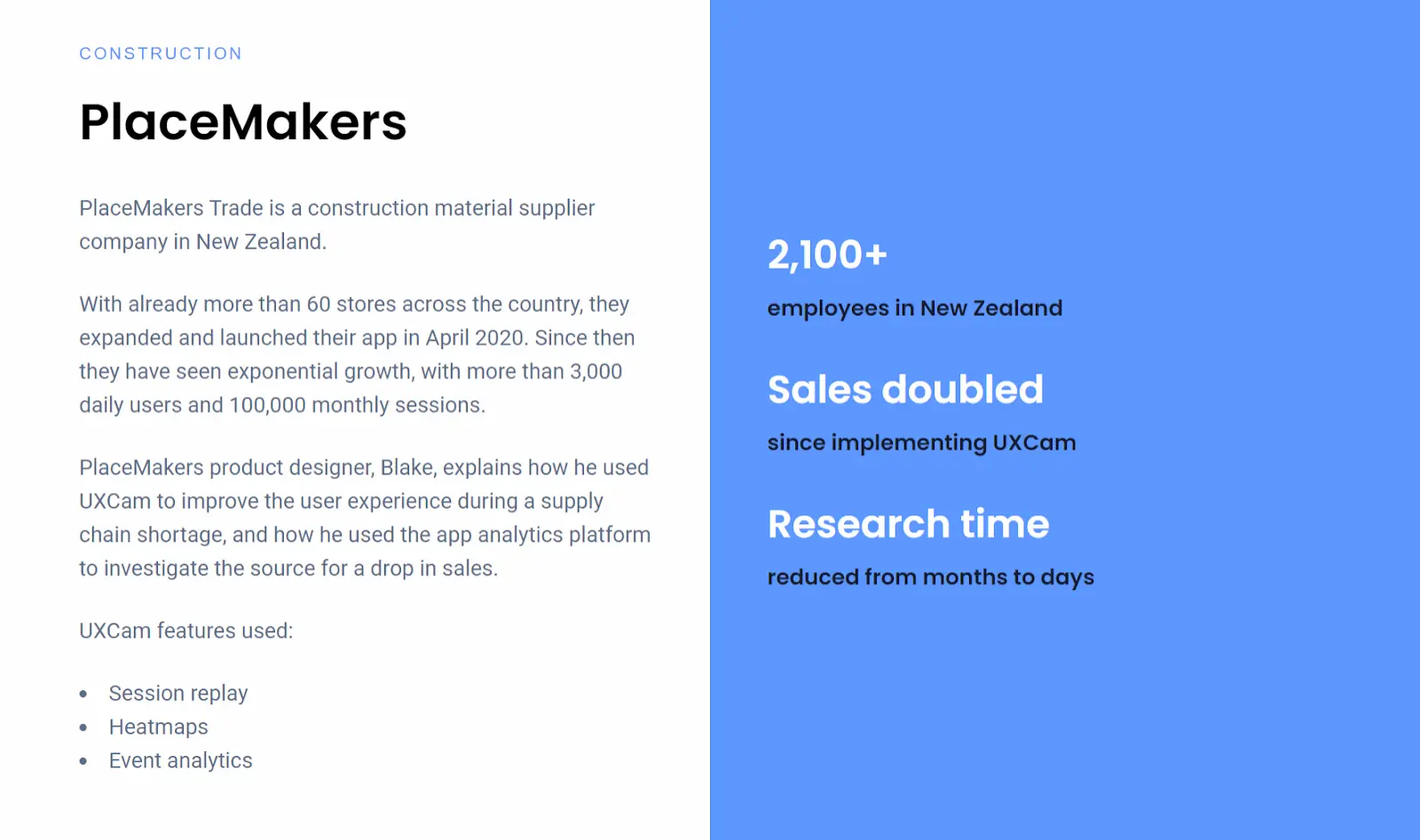
Housing.com: Session Replay
Housing.com, a leading online real estate platform in India, became the largest demand aggregator after merging with PropTiger in 2017. Their app is widely used, with every third home seeker in India using it for property searches or transactions.
But not everything was going smoothly.
The mobile product team faced challenges as the user base grew. Traditional in-person interviews were not scalable for a crowded B2C app market. And while they did have quantitative insights from tools like Google Analytics and Firebase, a lack of qualitative feedback hindered hypothesis testing.
Integrating UXCam provided immediate actionable insights through session recordings. Daily review of 50 to 100 user sessions helped identify key issues impacting user experience and led to the formation of hypotheses about feature usage.
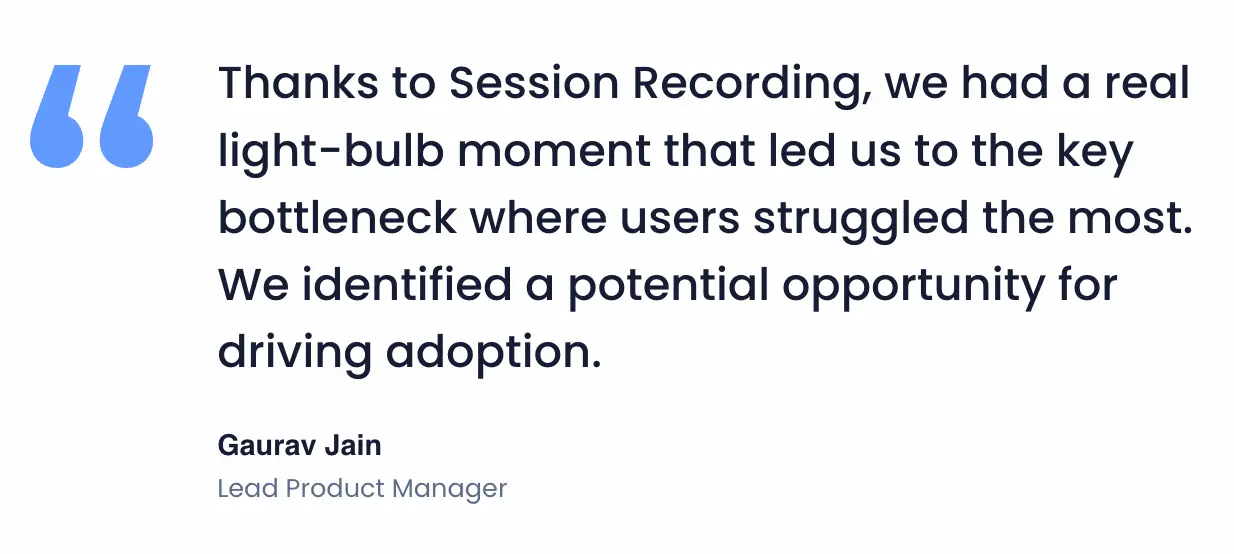
A significant breakthrough occurred when analyzing adoption patterns for the in-app search function, a crucial feature for marketplace B2C apps. This led to a 20% increase in feature adoption for Housing.com, showcasing the impact of data-driven decision-making on product success.
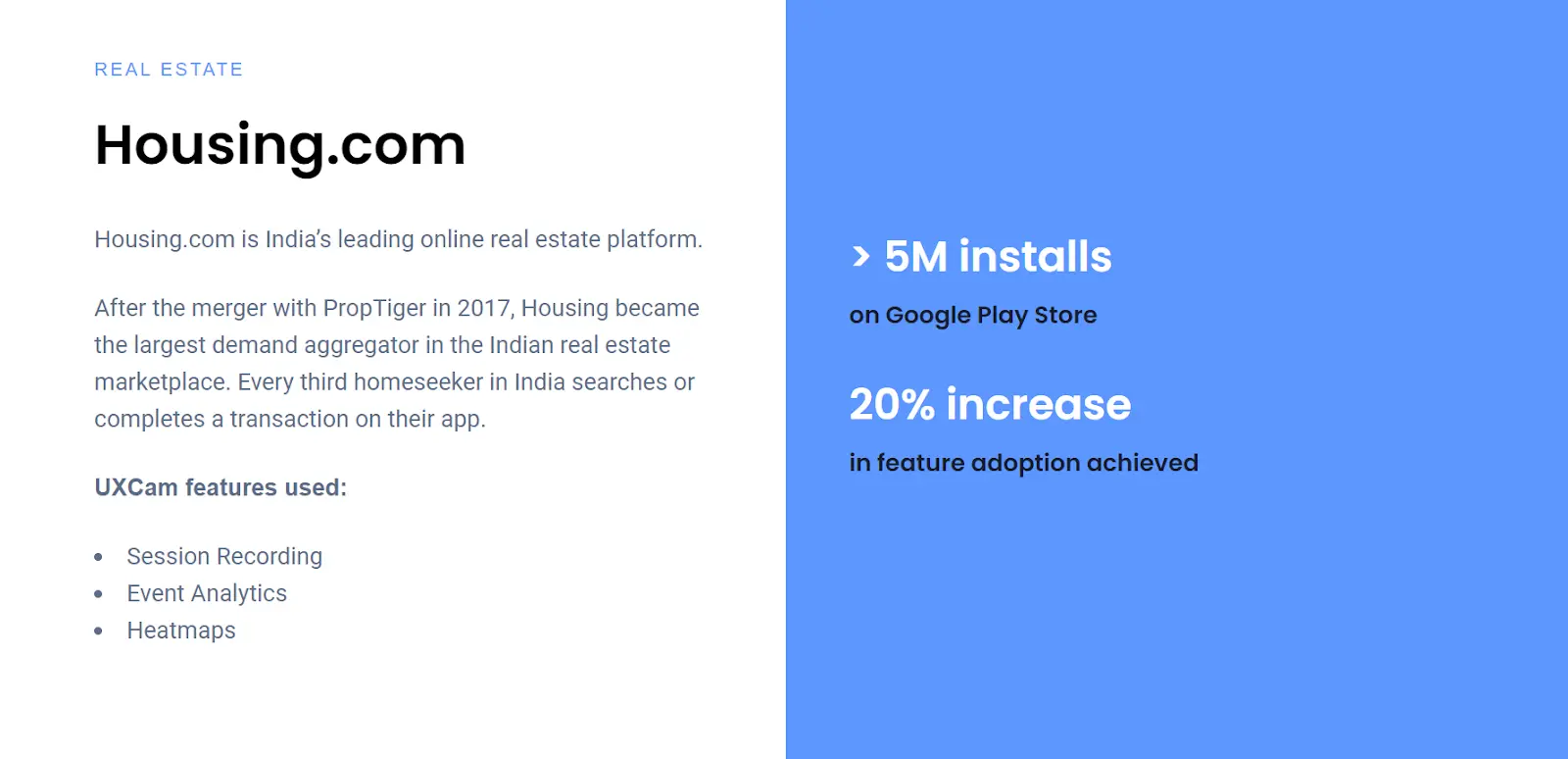
What is product analytics?
Product analytics is the process of collecting data on user behavior within a product or app and analyzing that data to gain insights and make informed decisions. This includes tracking user interactions, feature usage, and overall engagement metrics.
So why is this important for the performance and success of a mobile app?
The main benefit is confident, data-driven development. If you know how users interact with your app, you can make informed decisions on what features to improve or introduce, leading to a better user experience. This can increase user engagement, retention, and ultimately, revenue.
Additional benefits include:
Better user understanding
Identifying pain points
Measuring success
Tracking trends
Conclusion
Effective product analytics is crucial for product managers to inform decision-making, leading to business success. Tools like UXCam help companies uncover insights that drive growth, enhance user experiences, and gain a competitive edge.
The examples discussed in this guide showcase the impact of product analytics across industries. They highlight how data-driven strategies improve registration processes, app usability, customer support, and sales.
As companies embrace data-driven approaches, the importance of product analytics in shaping business outcomes will continue to grow, fostering innovation and success.
Don’t get left behind. Try UXCam for free today.
You might also be interested in this;
Product analytics dashboard examples (+ how to use them)
12 Best product analytics tools and software
Top 6 LogRocket alternatives for product analytics
AUTHOR

Tope Longe
Product Analytics Expert
Ardent technophile exploring the world of mobile app product management at UXCam.
What’s UXCam?
Related articles
Session Replay
Mobile Session Recording - The Complete Guide 2026
Why session replay is such a valuable feature, and what you should look out for when starting...

Annemarie Bufe
Product Analytics Expert
Product Management
14 Best Product Development Software for Every Team 2025
Discover the 14 best product development software tools to streamline collaboration, track progress, collect feedback, and build better products...

Tope Longe
Product Analytics Expert
Product Management
13 Best Product Management Tools 2025 & When to Use Them
Find out the top tools that the best product managers use daily to perform better at...

Jane Leung
Product Analytics Expert
